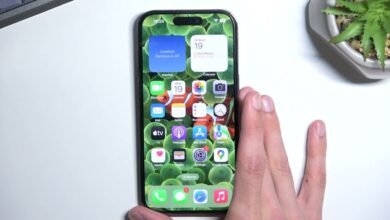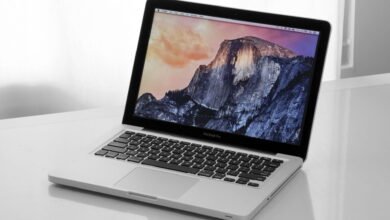
Amid the digital age, education seamlessly migrates to the virtual landscape, where the “Google Classroom Creation Guide” stands as a beacon. This guide enhances teaching methodologies, fosters robust collaboration, and nurtures vibrant online learning encounters.
As an indispensable resource, Google Classroom centralizes coursework management, promotes collaborative endeavors, and enhances student-teacher communication. Its innovative features cater to educators’ evolving needs, marking it as a cornerstone in the digital evolution of modern pedagogy.
Google Classroom revolutionizes education, fostering connectivity and engagement in virtual learning environments. Its centralized platform streamlines coursework management, encourages collaboration, and facilitates student communication, making it indispensable for educators.
With seamless integration with Google Apps and a user-friendly interface, it emerges as the premier choice for navigating the digital education landscape.
Setting Up Your Google Classroom
Embarking on setting up your Google Classroom marks the fundamental step towards crafting a dynamic virtual learning space. It entails the creation of a Google Account, entering the Classroom interface, and exploring its intuitive features.
Vital actions encompass class initiation, personalized settings configuration, and adept student enrollment management, fostering a fluid and effective online teaching atmosphere.

Creating a Google Account
Are you eager to dive headfirst into the wonders of Google Classroom? Ready to embark on your educational voyage with a Google Account? Fear not! Navigate to Google’s signup gateway, where your details await entry.
Lo and behold! You are equipped for your academic odyssey, armed with Google Classroom’s limitless potential. Your Google Account is primed and prepared for the journey ahead!

Accessing Google Classroom
Navigating the Interface
Experience the seamless navigation of Google Classroom with our comprehensive ‘Google Classroom Creation Guide.’ Designed for tech veterans and novices, it ensures effortless interaction and engagement throughout the platform’s spectrum.
Accessibility is paramount within Google Classroom, which empowers users to connect and collaborate easily. Exuding excellence through flawlessly curated content, Google Classroom invites users to delve into its myriad features and functionalities.
Seamlessly integrating user-friendly navigation, Google Classroom emerges as the epitome of accessible online educational platforms, fostering inclusivity for educators regardless of their backgrounds or levels of proficiency.
Creating Your First Class
“Creating Your First Class is a pivotal step in utilizing Google Classroom. It involves initiating the class creation process, adding a distinctive name and section, and configuring essential settings. It sets the foundation for educators to organize coursework, manage student enrollment, and establish a virtual learning space tailored to their teaching preferences.
Clicking on the ‘+’ sign
You can effortlessly begin creating your inaugural class by selecting the ‘+’ icon on the Google Classroom dashboard. Access the menu and opt for “Create Class” to initiate the process.
Adding a class name and section
Personalize your class by adding a name and section. It helps organize multiple courses and makes it easier for you and your students to identify the coursework.

Adjusting settings and permissions
Before you finalize the class creation, take a moment to adjust settings and permissions. It includes controlling who can join the class, post comments, or modify class content.
Adding Students to Your Class
Adding Students to Your Class: Streamlining enrollment is crucial for a successful Google Classroom experience. Invite students via email or share a unique class code, ensuring secure access. Manage student enrollment effortlessly, allowing educators to maintain control and create a cohesive virtual learning environment.
Inviting students via email
Invite students via email to populate your virtual classroom, ensuring a secure and straightforward access process. This method guarantees that only asked students gain entry, maintaining class security and privacy.
Sharing the class code
Alternatively, you can share a unique class code with your students. They can enter this code when joining the class, simplifying enrollment.
Managing student enrollment
Google Classroom provides tools to manage student enrollment effectively. You can add or remove students as needed, maintaining control over your class roster.
Posting Assignments and Announcements
In the ‘Posting Assignments and Announcements framework,’ Google Classroom is a dynamic hub that effortlessly merges instructional content. This platform empowers educators to disseminate assignments, distribute learning materials, and relay essential announcements seamlessly.
Setting Up Your Google Classroom
This streamlined communication fosters a dynamic and organized virtual learning environment, enhancing engagement and collaboration in the digital educational realm.

-
Uploading materials
Google Classroom’s user-friendly design streamlines assignment and announcement posting. You can seamlessly upload materials from your device or link to files stored in Google Drive, simplifying your workflow. With just a few clicks, it enhances student accessibility, optimizing the educational journey.
-
Scheduling posts
To ensure a structured learning experience, use the scheduling feature to plan when assignments and announcements are visible to students.
-
Using different content types
Google Classroom fosters dynamic content creation, embracing text, images, videos, and links to craft diverse and captivating learning materials. Its adaptable nature empowers educators to curate a spectrum of engaging resources, enhancing the educational experience. In content versatility, Google Classroom catalyzes innovative and immersive learning.
Grading and Feedback
Let’s read more about the following steps.
- Reviewing student submissions
- Providing feedback
- Grading options
-
Reviewing student submissions
Efficiently review and grade student submissions within the Google Classroom interface. It centralizes the grading process, saving educators valuable time.
-
Providing feedback
Google Classroom is an excellent tool for providing students with helpful criticism and creating a supportive learning atmosphere. Its suite of tools enables teachers to offer wise advice, fostering the kind of encouraging environment necessary for learning and advancement.
-
Grading options
Customize your grading system to align with your assessment criteria. Google Classroom accommodates various grading scales, ensuring flexibility for educators.
Integrating Google Apps
Let’s read more about the following steps.
- Linking Google Drive files
- Collaborating with Google Docs
- Using Google Forms for Assessments
-
Linking Google Drive files
Seamlessly integrate Google Drive files into your classroom materials. This integration simplifies file management and ensures easy access for educators and students.
-
Collaborating with Google Docs
Discover the dynamic fusion of Google Docs within your Google Classroom environment, unleashing the potential of collaborative learning like never before. Seamlessly integrating Google Docs amplifies student engagement, igniting a vibrant exchange of ideas in real time.
This innovative integration facilitates collaboration and cultivates fertile ground for deeper comprehension and enriched educational voyages. As students coalesce within the digital realm of Google Docs, they embark on a journey of collective exploration, honing crucial collaborative proficiencies that extend far beyond the classroom walls.
-
Using Google Forms for Assessments
Using Google Forms, create tests and quizzes right inside Google Classroom. This interface expedites exam processing, ensuring swift feedback for students.
Troubleshooting Common Issues
Let’s read more about the following steps.
-
Connectivity problems
Addressing connectivity issues is essential for a smooth learning experience. Educators should be familiar with common connectivity problems and guide students.
-
Accessing Google Classroom on different devices
Google Classroom beckons across a spectrum of digital landscapes, its accessibility spanning PCs, tablets, and smartphones alike. In the intricate web of education, teachers emerge as pivotal architects, guiding students to harness the full potential of this platform across diverse devices.
They weave seamless experiences, bridging technological realms and educational aspirations, ensuring every student embarks on a journey illuminated by knowledge and empowered by digital fluency.
-
Common user errors and how to resolve them
Educators should be proficient in addressing prevalent user errors, encompassing submission glitches and platform navigation challenges. Providing clear instructions and troubleshooting tips can mitigate these challenges.
Google Classroom Best Practices
Let’s read more about the following steps.
-
Managing class notifications
Customize notification settings to manage the flow of information. It ensures that educators and students receive relevant updates and feel safe.
-
Utilizing the ‘Ask a Question’ feature
Use the ‘Ask a Question’ function to promote student participation. Students can use this platform to clarify coursework doubts and engage in discussions.
-
Encouraging collaboration among students
Encourage student collaboration to create community in your online learning environment. Discussions and group projects can improve the educational process as a whole.
Enhancing Engagement
Let’s read more about the following steps.
-
Incorporating multimedia elements
Transform your teaching with our groundbreaking “Google Classroom Creation Guide.” Elevate lessons with multimedia, crafting an immersive learning experience that captivates students’ interest. Weave videos, graphics, and interactive content to foster curiosity and deepen comprehension.
-
Organizing virtual class discussions
Facilitate virtual class discussions to encourage student interaction. Google Classroom provides tools for hosting talks, allowing students to share ideas and perspectives.
-
Facilitating peer interaction
Promote peer interaction by incorporating activities that require collaboration. It not only enhances engagement but also develops valuable teamwork skills.
Customizing Class Themes and Settings
Let’s read more about the following steps.
-
Personalizing the class appearance
Make your virtual classroom unique with our optimized “Google Classroom Creation Guide.” Personalize the theme and appearance for an inviting environment.
-
Adjusting privacy settings
Change solitude settings to keep power over your class. It ensures that the learning environment is secure and accessible only to authorized individuals.
-
Customizing notification preferences
Customizing notification settings provides educators with the autonomy to remain informed about class proceedings without feeling overwhelmed. Achieving an optimal equilibrium is crucial in efficiently handling notifications and maintaining connectivity without succumbing to an inundation of information.
Google Classroom Updates and Features
Let’s read more about the following steps.
-
Staying informed about new features
Google Classroom continually evolves with updates and new features. Educators should stay informed about these changes to leverage the latest tools and functionalities.
-
Exploring recent updates
Periodically explore recent updates within Google Classroom. Familiarizing yourself with new features maximizes the platform’s potential for an enhanced teaching experience.
-
Adapting to changes in the platform
As technology advances, Google Classroom may change. Teachers ought to embrace the adaptability to pivot and the enthusiasm to embrace new elements, fostering a seamless transition for their growth and that of their students.
Conclusion
In the dynamic realm of digital education, Google Classroom emerges as a catalyst for transformative learning experiences, sparking avenues for enriched educational exploration. With its user-friendly interface and seamless fusion across diverse Google Apps, educators harness its potential to sculpt vibrant virtual learning spaces, igniting student participation and fostering academic advancement.
FAQs
Are smartphones compatible with Google Classroom for students?
How can I encourage student participation in virtual discussions?
Is Google Classroom mindful of privacy issues?
How often does Google Classroom receive updates?








